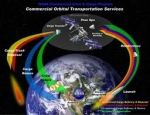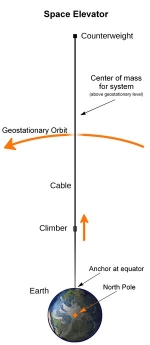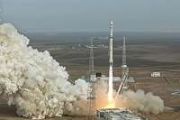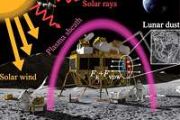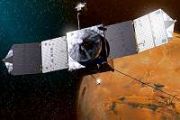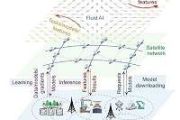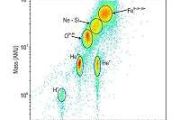Displaying items by tag: transportation
Tecnau Transport Division Srl
Tecnau Transport Division s.r.l company operates in the sector of Supervision/Scada systems and Remote Control. The company develops software products and provides qualified support with special attention to technical innovation for the engineering of complex rail transport systems.
The company is certified with quality management system compliant with Norm ISO 9001:2008 for the activities of design, installation and support of software and information systems for systems (plants) of management of railways traffic.
CGS SpA
CGS SpA is an Italian prime contractor for small satellites.
CGS SpA provides the user community with solutions for space science and space applications by:
- Exploiting the potential of small and medium satellite missions;
- Exploiting orbital and transportation systems;
- Focusing on the technologies that can be turned into products for scientific and application projects;
- Developing technologies for Earth Observation services.
COTS - Commercial Orbital Transportation Services Program
Commercial Orbital Transportation Services (COTS) is a NASA program to coordinate the delivery of crew and cargo to the International Space Station by private companies.
The program was announced on January 18, 2006. NASA has suggested that "Commercial services to ISS will be necessary through at least 2015."
COTS must be distinguished from the related Commercial Resupply Services (CRS) program. COTS relates to the development of the vehicles, CRS to the actual deliveries. COTS involves a number of Space Act Agreements, with NASA providing milestone-based payments. COTS does not involve binding contracts.
Sierra Nevada Corporation (SNC)
Sierra Nevada Corporation (SNC) is an electronic systems provider and systems integrator specializing in microsatellites, energy,telemedicine, nanotechnology, and commercial orbital transportation services. The company contracts with the US military, NASA and private spaceflight companies. The company is headquartered in Sparks, Nevada, USA.
On December 2008 SNC acquired the company SpaceDev. SNC is now developing an orbital spacecraft called the Dream Chaser. On February 2010, Sierra Nevada Corporation was awarded a contract in phase 1 of NASA’s Commercial Crew Development (CCDev) program for the development of the Dream Chaser.
Dream Chaser (space plane)
The Dream Chaser is a space plane concept studied and developed by the North-American company Sierra Nevada Corporation (SNC).
It is designed to be a crewed suborbital and orbital vertical-takeoff, horizontal-landing (VTHL) lifting-body space plane. The Dream Chaser design is planned to carry up to seven people to and from low earth orbit. The vehicle would launch vertically on an Atlas V and land horizontally on conventional runways.
Space elevator
A space elevator is a proposed type of space transportation system.
Its main component is a ribbon-like cable (also called a tether) anchored to the surface and extending into space. It is designed to permit vehicle transport along the cable from a planetary surface, such as the Earth's, directly into space or orbit, without the use of large rockets. An Earth-based space elevator would consist of a cable with one end attached to the surface near the equator and the other end in space beyond geosynchronous orbit (35,800 km altitude). The competing forces of gravity, which is stronger at the lower end, and the outward/upward centrifugal force, which is stronger at the upper end, would result in the cable being held up, under tension, and stationary over a single position on Earth. Once deployed, the tether would be ascended repeatedly by mechanical means to orbit, and descended to return to the surface from orbit.
ref: The International Space Elevator Consortium
ref: other dedicated website: www.spaceelevator.com
ref: 2012 Annual Space Elevator Conference Set for August 25-27
DLR
The German Aerospace Center (DLR) (German: Deutsches Zentrum für Luft- und Raumfahrt e.V.) is the national centre for aerospace, energy and transportation research of the Federal Republic of Germany. It has multiple locations throughout Germany. Its headquarters are located in Cologne. It is engaged in a wide range of research and development projects in national and international partnerships.
In addition to conducting its own research projects, DLR also acts as the German space agency. As such, it is responsible for planning and implementing the German space programme on behalf of the German federal government. As project management agency, DLR also coordinates and answers for the technical and organisational implementation of projects funded by a number of German federal ministries.
Space Shuttle program
The NASA's Space Shuttle program, officially called Space Transportation System (STS), was the United States government's manned launch vehicle program from 1981 to 2011. The winged Space Shuttle orbiter was launched vertically, usually carrying four to sevenastronauts (although eight have been carried) and up to 50,000 lb (22,700 kg) of payload intolow Earth orbit (LEO). When its mission was complete, the shuttle could independently move itself out of orbit using its Maneuvering System (it oriented itself appropriately and fired its main OMS engines, thus slowing it down) and re-enter the Earth's atmosphere. During descent and landing the orbiter acted as a re-entry vehicle and a glider, using its OMS system and flight surfaces to make adjustments.
The shuttle is the only winged manned spacecraft to have achieved orbit and land, and the only reusable space vehicle that has ever made multiple flights into orbit. Its missionsinvolved carrying large payloads to various orbits (including segments to be added to theInternational Space Station), provided crew rotation for the International Space Station, and performing service missions. The orbiter also recovered satellites and other payloads (e.g. from the ISS) from orbit and returned them to Earth, though its use in this capacity was rare. Each vehicle was designed with a projected lifespan of 100 launches, or 10 years' operational life.
The program started in the late 1960s and dominated NASA's manned operations since the mid-1970s. According to the Vision for Space Exploration, use of the space shuttle was to be focused on completing assembly of the ISS by 2011, after which it was retired. NASA planned to replace the shuttle with the Orion spacecraft, but budget cuts have placed full development of the Orion craft in doubt. The program commenced on April 12, 1981, withColumbia and STS-1, the first shuttle orbital flight. The space shuttle program finished with its last mission, STS-135 flown by Atlantis, in July 2011, retiring the final shuttle in the fleet. The Space Shuttle program formally ended on August 31, 2011.



